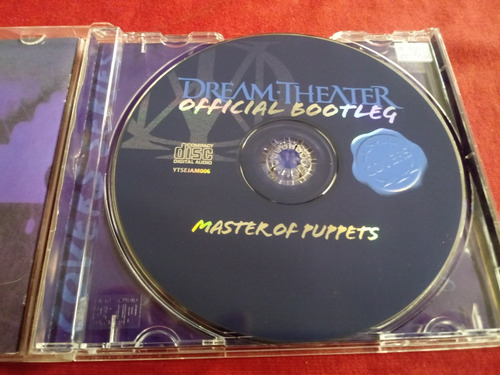

Dream Theater was even named the tenth best progressive rock band of all time and won the award for best progressive rock album ( Metropolis Pt. The band from other groups within the subgenre. While the interplay between the two parent styles of progressive rock and heavy metal characterizes the music of progressive metal bands in general, (5) Dream Theater’s emphasis on “progressive” elements further differentiates Similarly, the band makes use of many of the primary markers of the heavy metal genre: distorted timbres, power chords, extended “shred guitar” techniques, dark, powerful, or transgressive imagery and lyrics, aggressive double-bass drum patterns, and the traditional metal “uniform” of long hair, black t-shirts, and “denim and leather.” (4) (3) However, other prominent elements from the progressive rock style are routinely present, including: atypical rock instrumentation (such as the use of synthesizers and classical concert music instruments), extended forms (including concept albums), flashy displays of virtuosity for every instrumentalist in the ensemble, strikingly intricate album cover art, and fantastical lyrics that express epic conflicts.

The most salient “progressive” aspect of Dream Theater’s sound is its rhythmic and metric complexity, a trait that typifies progressive metal as a subgenre. Changes in personnel are indicated by bold text.Įxample 1. In Example 1, each of the band’s studio recordings is listed by period, with an indication of the band’s lineup within each period.

Dream Theater’s history can be broken into five periods to date, based on band personnel. It’s a gathering of influences to create a genre” ( 70). Journalist Malcolm Dome’s description of Dream Theater’s sound in Wilson 2007 is apt: “If Metallica had grown up on Styx or Kansas, this is what they might have sounded like. Guitarist John Petrucci (quoted in Roadrunner Records 2009) describes this sound as a “mixture of ‘70s prog and ‘80s metal,” and, indeed, the musical elements I perceive as being the most salient in the band’s music can be directly linked to these styles and eras. Former drummer and bandleader Mike Portnoy attests to the importance of stylistic consistency to the band members: “We try to have our sound and our style that we never stray from-we want to stay loyal and faithful to that” ( Dream Theater 2004). Despite numerous changes in management, record label affiliation, and especially band personnel, Dream Theater has intentionally strived for, and managed to maintain, a consistent sound that has become synonymous with the progressive metal style. Despite the earlier works by these bands, however, the most commercially visible torchbearer for the style is the Long Island-based group Dream Theater. Bowman ( 2002) notes that Rush’s song “Bastille Day” (1975) was perhaps the earliest example of this “musicianly” style, (1) although it is generally accepted that Queensrÿche’s concept album Operation: Mindcrime (1988) is the first full-length exemplar. One of the most commercially successful heavy metal subgenres became known as “progressive metal.” Durrell S. The analysis demonstrates Dream Theater’s “progressive” aesthetic, and it aids in a characterization of the band’s sound as possessing a progressive rock center and a heavy metal periphery.Ĭopyright © 2013 Society for Music Theory The temporally complex examples I analyze in this article-culled from throughout Dream Theater’s decades-long career-are compared with techniques of early minimalist composers. The aim of this article is to describe Dream Theater’s unique metrical processes, focusing on a technique that I label the ABAC Additive Metrical Process (ABAC-AMP). Dream Theater, one of the most visible and commercially successful progressive metal bands, however, has received little scholarly attention to this point. Jonathan Pieslak’s 2007 article on the music of Meshuggah does much to delimit the stylistic boundaries of the subgenre, noting the importance placed by progressive metal bands and their fans on the rhythmic and metrical complexity of the music. KEYWORDS: Dream Theater, heavy metal, progressive rock, progressive metal, rhythm, meter, popular music, minimalism, liquidation, ABAC-AMPĪBSTRACT: While the popular genres of progressive rock and heavy metal have received significant scholarly attention, discussions of the syncretic subgenre of progressive metal are rare.


 0 kommentar(er)
0 kommentar(er)
